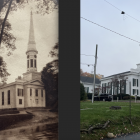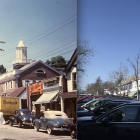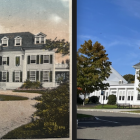News
New Canaan Now & Then: Mansion House
|
The current owners are not spooked by the ghost that occupies their home at 453 Carter Street. The cast of characters that lived in this residence seems as though they would be excellent housemates. The house, known as the Mansion House or the “Benedict-Eels-Thatcher House,” is reputedly the oldest house in New Canaan. It was built in 1724 on land owned by the Carter family who sold it to Deacon John Benedick Jr, who gifted it to his son, John Benedick, soon after his wedding to Dinah Bouton of Norwalk. At the time Carter Street was known as Clapboard Hills.




